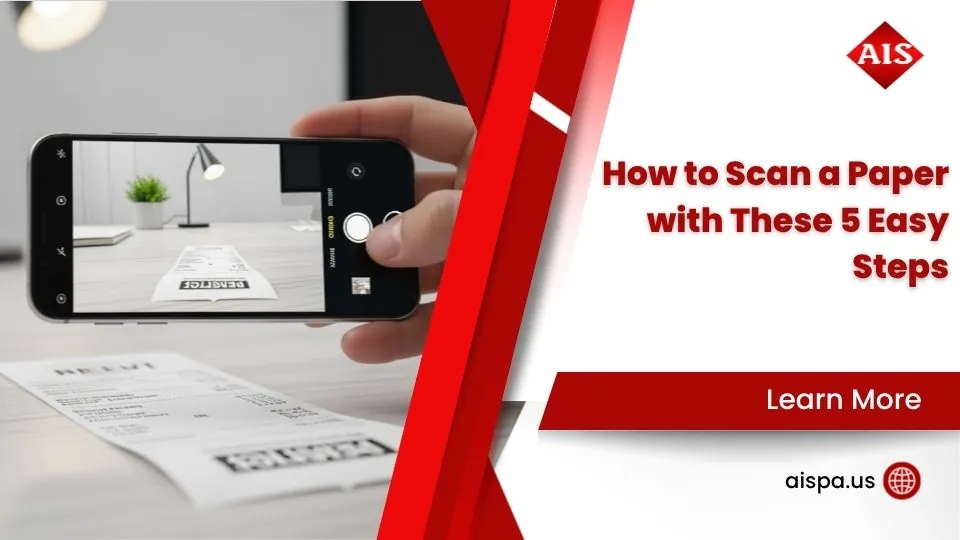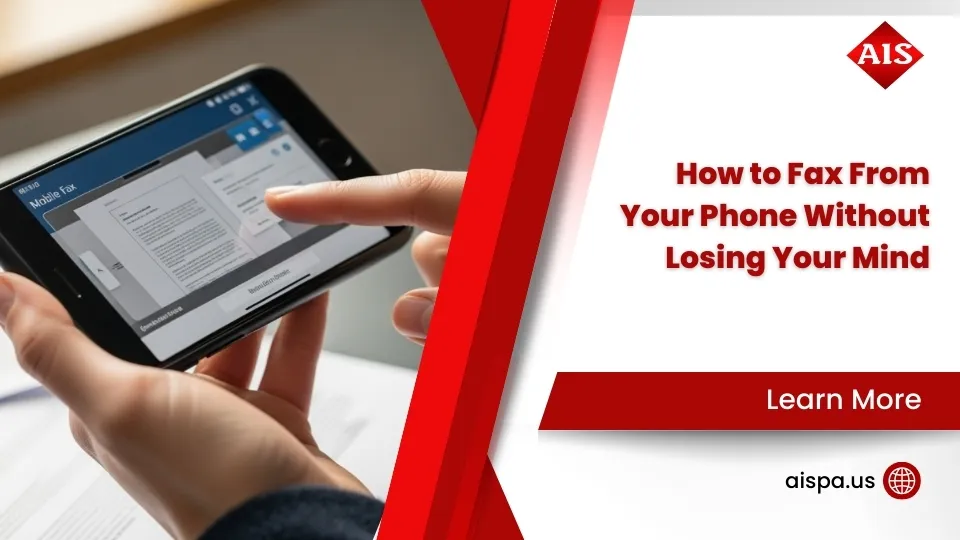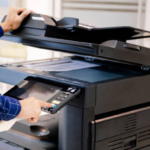Flyer Paper 101: Making Your Flyers Stand Out
Choosing the best paper for flyers is about making a statement before anyone reads your message. A flimsy or dull flyer leaves a poor impression. The right paper engages the senses, making your message memorable and preventing it from being tossed aside.
For most common flyer needs, here are quick recommendations:
| Purpose | Best Paper Choice | Key Feature |
|---|---|---|
| Mass Distribution | 70 lb. Paper | Thin, lightweight, budget-friendly |
| Mailing / Professional Use | 100 lb. Paper | Quality feel, like a magazine page |
| Long-Term Use / Premium | 16 pt. Cardstock | Rigid, durable, thickest option |
| Outdoor / Harsh Conditions | Waterproof / Synthetic Paper | Rip-proof, water and grease resistant |
In this guide, we’ll explore why paper choice matters, looking at paper weight, thickness, and finishes to help you pick the perfect paper for your specific flyer goals.

Understanding Paper Weight and Thickness: The Foundation of a Quality Flyer
When choosing the best paper for flyers, you’ll encounter terms like “paper weight” and “thickness.” These are crucial factors that determine how your flyer feels, looks, and endures handling—the foundation of its first impression.
Paper Weight Explained
Paper weight indicates how heavy a sheet of paper is, measured in GSM (Grams per Square Meter) or pounds (lb).
GSM is a global standard measuring a paper’s weight in grams per square meter. A higher GSM means heavier, thicker paper. For context, office printer paper is about 80 GSM, newsprint is lighter at 40 GSM, and a sturdy business card can be 300 GSM or more.
In North America, paper weight is often measured in pounds (lb). This is based on the weight of 500 sheets of paper in its original, uncut size. For flyers, you’ll commonly see weights like 70 lb., 80 lb., or 100 lb.
The weight you pick shapes perception. A 70 lb. paper is light and budget-friendly, ideal for mass distribution, but its thinness might seem less important. Conversely, a 100 lb. paper feels more substantial, like a magazine page, making it perfect for mailing or conveying higher quality.
Want to learn even more about paper types and sizes? Check out our helpful guide: Printing Paper Types and Sizes: Top Guide 2025.
Paper Thickness Explained
While paper weight suggests heaviness, thickness is the exact measurement, usually in Mil (thousandths of an inch) or points (pt) for cardstock.
A higher Mil number means thicker paper. Most durable flyers fall between 8 and 14 Mil. A super sturdy option, like an invitation, might be 16 pt. cardstock, which is truly rigid and durable.
Why does thickness matter? A thicker flyer is tougher and less likely to crease or tear, which is ideal for materials that need to last. However, there’s a balance. Paper that’s too thick can jam printers or be difficult to transport. For Associated Imaging Solutions, helping businesses find the right equipment and paper is key. It’s about balancing a professional look with smooth printing operations.
Choosing the right thickness ensures your flyer not only survives its journey but also leaves a strong, positive impression.

A Guide to Paper Finishes: How to Improve Your Flyer’s Visual Appeal
Once you’ve handled weight and thickness, consider the paper finish. The finish is key to your flyer’s visual appeal and audience connection, changing your design by influencing color vibrancy and readability. Let’s explore common finishes to see how each can make your flyer shine.

Glossy Finish
A glossy finish offers a vibrant, eye-catching look, similar to a magazine cover. Its shiny, reflective surface makes colors pop and images appear crisp, making it the best paper for flyers with rich photos. Key perks include vibrant color reproduction, sharp image quality, and some moisture resistance. However, the glare can make text-heavy designs hard to read, and writing on it is difficult as ink smudges easily. Glossy is excellent for product showcases or any flyer where images are the main focus.
Matte Finish
A matte finish is sophisticated and understated, with a non-reflective, smooth surface that feels professional. It’s often the best paper for flyers where readability is key. The main advantage is reduced glare, making text easy to read in bright light, which is ideal for information-heavy designs. While colors are less vibrant than on glossy paper, they remain rich and consistent. You can also write on matte paper, though ink may need time to dry. Matte is perfect for corporate communications, detailed brochures, or menus where clarity is essential.
Uncoated Finish
An uncoated finish has no extra layer, giving it a natural, textured feel. It’s the best paper for flyers that need to be written on, like forms or appointment cards. Its key features are a natural, tactile feel and an absorbent surface. This finish often conveys a rustic or eco-friendly aesthetic and is usually the most budget-friendly choice. The downsides are that colors may appear less vibrant due to ink absorption, and it’s less durable than coated options. Choose uncoated paper for writable surfaces or minimalist designs.
Silk Finish
A silk finish is a hybrid of glossy and matte, offering a smooth texture with a subtle sheen. It feels premium, making it a top choice for businesses seeking a high-quality impression. Silk finish excels at balancing visual appeal with readability, providing better color vibrancy than matte without the glare of gloss. This makes it versatile for designs with both images and text. It also offers good durability and a substantial feel. Though slightly more expensive, its perceived value is often worth the cost. Silk is ideal for professional handouts or high-end marketing materials.
Your choice of finish is a powerful tool in your flyer’s overall presentation, directly impacting how your message is perceived. To explore even more options and understand how different papers perform, you might find our guide on how to Choose Right Printer Paper Types incredibly helpful.
How to Choose the Best Paper for Flyers Based on Your Goal
So, you’ve got a fantastic message, a dazzling design… now, what about the paper? Think of it this way: you wouldn’t wear flip-flops to a fancy dinner, right? The same goes for your flyers! The paper you choose should perfectly match your flyer’s big mission. Understanding your campaign goals, who you’re trying to reach, and how you plan to hand them out is key to making the very best decision.
Your flyer’s paper isn’t just a surface; it’s a silent ambassador for your brand. It whispers (or shouts!) about your quality and care. Want to dive even deeper into all the cool materials out there? Check out our article on Paper Material for Printing.
For Mass Distribution & Tight Budgets
Imagine you need to get your message out to everyone! Think big events, street fairs, or just covering a whole neighborhood. When your main goal is wide reach and keeping costs down, lightweight paper is your best friend.
We’re talking about paper around 70 lb. (or 100-135 GSM). It’s thin and super budget-friendly, which means you can print a whole lot more without emptying your wallet. Plus, it’s light, making it easy to carry stacks for street promotions or door-to-door marketing. It’s also ideal for takeaway menus at your favorite restaurant or any high-volume advertising where quantity is key. Yes, it might feel a little less hefty, but for getting your word out far and wide, it truly is the best paper for flyers in this scenario. Curious about more paper types? Our guide on Types of Printing Paper has you covered.
For Professional Handouts & Direct Mail
Now, what if your flyer needs to feel a bit more substantial? Maybe it’s heading through the mail, or you’re handing it out at a professional event. For these moments, a medium-weight paper truly shines.
Think around 100 lb. (or 150-170 GSM). This paper feels great in your hand – not too thin, not too rigid, almost like a glossy magazine page. It’s the best paper for flyers that need to make a good impression and stand up to a bit of travel. It’s perfect for direct mail campaigns, ensuring your message arrives looking sharp, not crumpled. It’s also fantastic for trade shows and conferences or corporate events, where you want handouts that feel premium and reflect your brand’s professionalism. Sometimes, these even double as mini-brochures!
For Premium Flyers & Lasting Impressions
But what if your flyer isn’t just a flyer? What if it’s an invitation to a special event, a loyalty card, or something truly meant to be kept and cherished? That’s when you reach for cardstock.
This isn’t just paper; it’s a statement! Cardstock comes in different thicknesses, usually from 10 pt. to 16 pt. (or 250-400 GSM), with 16 pt. being wonderfully thick and rigid. It feels incredibly durable and luxurious, instantly telling your audience this isn’t just a throwaway item. It resists bending, tearing, and creasing like a champ. It’s the best paper for flyers that serve as invitations for exclusive events, sturdy loyalty cards or punch cards, or even premium business cards. For high-end promotions or materials for important closed meetings, cardstock truly makes a lasting impression. Want to know more about different cardstock options? Our Best Cardstock Printing by Weight Guide has all the details!
The best paper for flyers used in Demanding Environments
What if your flyer needs to survive a downpour, a greasy kitchen, or just a lot of rough handling? Regular paper simply won’t cut it. For these tough spots, you need specialized papers.
Think waterproof synthetic paper, also known as tear-resistant or rip-proof paper. Brands like TerraSlate or Nevertear are designed to laugh in the face of water, grease, chemicals, and constant use. Unlike regular paper that might get soggy or tear, these materials offer incredible built-in durability. They’re often UV resistant too, meaning they won’t fade quickly in the sun. This makes them the absolute best paper for flyers meant for outdoor events, spill-prone restaurant menus, or essential guides for field operations. They’re even perfect for lost pet flyers that need to endure all sorts of weather, or for reusable signage. Plus, it’s a win for the planet, as you can often skip the plastic lamination!
Practical Considerations: Sizing, Cost, and Sustainability
Beyond the technical aspects of paper weight and finish, there are several practical factors that can make or break your flyer campaign. Let’s explore the real-world considerations that affect your bottom line and your brand’s impact.
Flyer Size & Dimensions
Size matters when it comes to flyers, but not always in the way you might think. The most popular flyer size in the US is 5.5 x 8.5 inches – that’s half the size of a standard letter sheet. This sweet spot gives you enough room to tell your story without overwhelming your audience or your budget.
Think about it this way: a postcard-sized flyer (4.25 x 5.5 inches) fits perfectly in a pocket but limits your design options. On the flip side, a full 8.5 x 11-inch flyer gives you plenty of creative space but becomes harder to distribute and more expensive to print.
The portability versus content space balance is crucial here. If you’re handing out flyers at a busy street fair, people want something they can quickly grab and stuff in their pocket. But if you’re mailing detailed information about your services, a larger format might be worth the extra cost.

Cost Implications
Here’s where choosing the best paper for flyers gets interesting – and where your budget reality check happens. Paper weight directly impacts your printing costs, and the difference can be substantial when you’re printing thousands of flyers.
Lighter papers like 70 lb. stock keep costs down significantly, making them perfect for those massive distribution campaigns where every penny counts. But step up to 100 lb. paper, and you’ll notice the price increase – though the professional feel might justify the extra expense for certain campaigns.
Cardstock takes the biggest bite out of your budget. That luxurious 16 pt. cardstock that feels so impressive? It can cost three to four times more than standard 70 lb. paper. But here’s the thing – sometimes that investment pays off. A premium flyer that doesn’t get thrown away immediately might actually cost less per conversion than a cheap one that hits the trash can.
Finishes add another layer to your costs. Glossy and matte finishes typically cost more than uncoated paper, while specialty papers like waterproof synthetic options command premium prices. The key is balancing your budget with your goals – don’t spend cardstock money on throwaway street promotions, but don’t cheap out on materials that represent your brand at important events.
Environmental Impact
More businesses are finding that choosing eco-friendly paper isn’t just good for the planet – it’s good for their brand image too. Your paper choice sends a message about your company’s values, whether you realize it or not.
Recycled paper options have come a long way from the gray, rough sheets of the past. Today’s recycled papers can look and feel just as good as virgin paper while reducing environmental impact. Look for papers with high post-consumer waste content – these use materials that have already lived a full life and are getting a second chance.
FSC certification is your friend here. The Forest Stewardship Council ensures that paper comes from responsibly managed forests, giving you peace of mind that your flyer campaign isn’t contributing to deforestation. Many clients and customers notice these certifications, especially in environmentally conscious markets.
Here’s an interesting twist: some synthetic papers actually offer sustainability benefits despite seeming less eco-friendly at first glance. Because they eliminate the need for plastic lamination (which often isn’t recyclable), they can reduce overall plastic waste. Plus, their durability means you might need fewer reprints over time.
The environmental conversation doesn’t end with paper choice, either. Consider your printing methods, distribution strategies, and whether digital alternatives might complement your physical flyer campaign.
For more insights into making sustainable printing choices that don’t compromise on quality, check out our guide on Best Printer Paper for Quality and Sustainability.
Conclusion: Print with Purpose to Maximize Your Impact
Well, there you have it! Choosing the best paper for flyers isn’t just a small detail; it’s a powerful strategic move that can truly make your marketing efforts shine. We’ve explored how understanding the weight, thickness, and various finishes can completely transform your message. Think about it: a flimsy flyer might get tossed, but a sturdy, well-chosen one demands attention.
From the super budget-friendly, lightweight paper perfect for getting your message out to tons of people, to the luxurious, thick cardstock that screams quality and leaves a lasting impression, there’s a perfect paper for every single goal. And let’s not forget those specialized waterproof options, ready to tackle any demanding environment!
The big lesson here is to always print with purpose. Match your paper choice perfectly to your flyer’s message, who you’re trying to reach, and how it will be used. Think about the whole experience: How will it feel in someone’s hand? How will it look under different lights? How tough does it need to be? If you’re ever unsure, grab some samples and feel them for yourself before you print a big batch. It makes a huge difference!
At Associated Imaging Solutions, we truly get how important print quality is for your business success. We’re a Philadelphia-based team specializing in top-notch copier rentals, speedy repairs, and smart managed print services. We bring together our local know-how with global standards to give you personalized service and the best technology. Our goal? To help you keep printing costs down and make sure all your documents, especially those important flyers, always look their absolute best.
Ready to make your flyers truly stand out and take your business document management to the next level?
Get a quote for your business copier and printer needs
What is the most popular paper weight for flyers?
When it comes to picking a crowd-pleaser that balances quality, durability, and cost, 100 lb. paper (which is roughly 150 GSM) often takes the top spot. Think of it as the go-to all-rounder! This weight gives your flyer a really nice, substantial feel – not too flimsy, not too rigid, much like a high-quality magazine page.
It's just right for professional handouts, where you want to make a good impression without breaking the bank. It also holds up beautifully for direct mail campaigns, ensuring your message arrives looking crisp and ready to be read. When you pair this weight with a silk or gloss finish, you get a flyer that not only looks vibrant but feels premium to the touch. It's sturdy enough to handle typical use but still flexible enough to be easily distributed.
Is thicker paper always better for flyers?
This is a fantastic question, and the simple answer is: not necessarily! It's a common misconception that the thicker the paper, the "better" the flyer. While super-thick options like 16 pt. cardstock definitely scream premium quality and durability, they aren't always the right fit for every situation.
Think about it this way:
Cost: Thicker paper means more material, which means a higher price tag per sheet. If you're planning a massive giveaway or a street promotion, those costs can add up incredibly fast. Sometimes, being budget-friendly is the "best" choice.
Practicality: While sturdy, very thick paper can be harder to fold neatly, and it takes up more space, making large quantities bulky to transport. Plus, some printers might even struggle with extremely thick stock, potentially leading to jams or slower production times.
Your Goal: What's your flyer's mission? If you're handing out thousands of quick, budget-friendly takeaway menus or promoting a flash sale, a lighter paper (like 70 lb.) is far more practical and efficient. It gets the job done without unnecessary expense. However, if you're creating invitations for a high-end event or a collectible information card, then that luxurious, thick cardstock is absolutely perfect. The "best" thickness truly depends on what you want your flyer to achieve and how much you're willing to invest.
Can I write on any type of flyer paper?
You can certainly try to write on any flyer paper, but how easy and effective that writing will be varies a lot depending on the paper's finish!
Uncoated paper: If your flyer needs to be written on – perhaps for an appointment reminder, a loyalty punch card, or a space for customers to jot down their details – uncoated paper is the absolute best paper for flyers in this scenario. Its natural, porous surface is like a sponge for ink, absorbing it beautifully. This means clear, crisp handwriting without smudges, just like writing in a notebook.
Matte finishes: These are generally quite good for writing. While not as absorbent as uncoated paper, their non-reflective surface allows most pens to work well. Just give the ink a moment to dry, and you should be good to go.
Glossy finishes: This is where writing becomes a real challenge. The smooth, non-porous surface of glossy paper makes it tough for ink to stick and dry properly. You'll often find pens skipping, ink smudging easily, or simply not leaving a clear mark at all. Unless you're using a specific type of permanent marker designed for glossy surfaces, it's usually best to avoid glossy paper if you need people to write on your flyer.
So, if your flyer's purpose involves any kind of note-taking or form-filling, definitely steer towards an uncoated finish to keep things simple and effective for your audience.











